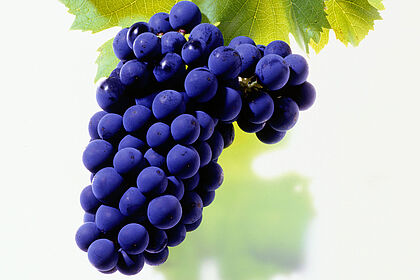レゲント|Regent
赤ワイン品種
Regent - a successful new variety
Regent has many advantages - early ripening, an above average must weight, a high resistance to winter frosts and a good resistance to downy mildew, oidium and botrytis therefore reducing the need for chemical plant protection. This has made it popular with many German winegrowers in almost all regions. Today (2018) there are 1,800 hectares, almost 2% of the German vineyard area, mainly in Rheinhessen, the Palatinate, Baden and Franconia.
Wines from the Regent grape variety are full-bodied, almost Mediterranean, with a tastable tannin structure and aromas of cherries or currants, reminiscent of other renowned red wine varieties. Must weights surpass even those of Pinot Noir and the wines are correspondingly rich. The moderate acid levels allow for the expansion of mild and velvety red wines with a rich red color and barriques are sometimes used for high-quality grapes.
The wines are ready to drink relatively early and pair well with salami sausages, well-matured mountain cheese, meat dishes with intense taste and concentrated sauces, a leg of lamb, an oxtail ragout or a game dish.
The Regent variety is one of the few successful hybrid varieties that is predicted to have a rosy future. In 1967, the Institute for Vine Breeding on the Geilweilerhof near Siebeldingen in the Southern Palatinate succeeded in crossing (Silvaner x Müller-Thurgau) x Chambourcin. The latter French variety, which is around 100 years old, brings with it the qualities of resistance. The first crossings had to be selected for years until plantings began in wine-growing trials in 1985. Variety protection was granted in 1993, two years later it was entered in the list of varieties, and in 1996 it was approved for quality wine production.

Regent
